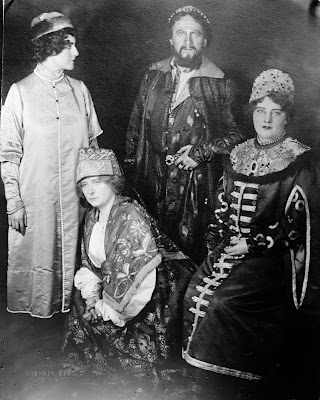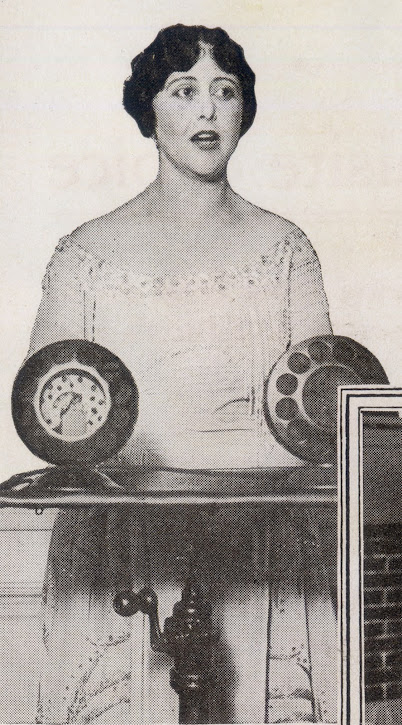A typical movie set during the silent film era was anything but - silent, that is. With no live microphones or audio recording of any type taking place, directors shouted out instructions, carpenters plied the tools of their trade, laborers moved equipment to and fro, and clinking cutlery and candid conversation could be heard around the buffet. All while a serious melodrama or precision-timed comedy was being filmed a few feet away. Add in the fact that many movies in the teens were produced at studios situated amid the hustle and bustle of midtown Manhattan, and what occurred on East 48th Street one September day in 1918 is even more remarkable.
 |
| Still photo of Anna Case in "The Hidden Truth" |
The moment the director called "action" and the first notes of Anna Case's exquisite soprano were heard, the entire studio fell silent. Tradesmen laid down their hammers, conversation halted, all motion ceased.
Outside on 48th street, deliverymen pulled up their wagons, street merchants who had been hawking their wares were suddenly mute. People up and down the block hung out of their windows to listen to "America's Favorite Soprano".
Released by Select Pictures as a five-reel feature in the Spring of 1919, "The Hidden Truth" was not a hit. Anna Case admitted she had a lot to learn about film acting. In an interview coinciding with the picture's release, she recalled seeing her performance for the first time, remarking candidly, "as a motion picture actress, I make a pretty good singer".
Despite promotional tie-ins with music stores who carried her records on the Edison label, the movie did little business beyond the initial curiosity seekers.
Unfortunately, all that remains of "The Hidden Truth" are these few still photos taken on the set and a sheet of musical cues for the theater organist.
 |
| Anna Case with costar Charles Richman in "The Hidden Truth" |
Despite promotional tie-ins with music stores who carried her records on the Edison label, the movie did little business beyond the initial curiosity seekers.
It is impossible today to see for ourselves why Anna Case's acting chops did not translate from the grand opera stage to the movie set, but judging from contemporary reviews, she appears to have been somewhat wooden in her role. The kindest of reviewers noted that at least she didn't partake in the grandiose overacting so common to melodramas of the period.
Oh, and perhaps a few notes floating high in the air above 48th Street.























